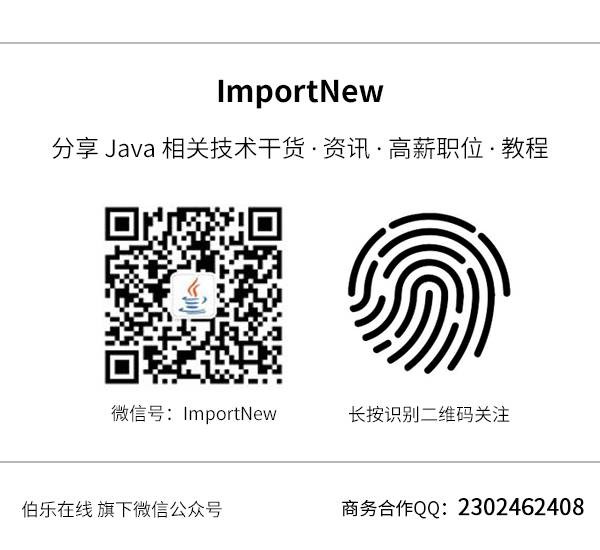(點選上方公眾號,可快速關註)
來源:瀟湘隱者 ,
www.cnblogs.com/kerrycode/p/9749096.html
前幾天剛接手一個 MySQL 資料,作業系統為Ubuntu 16.04.5 LTS, 資料庫版本為 5.7.23-0ubuntu0.16.04.1(APT方式安裝的MySQL)。這個作業系統下的 MySQL 的配置檔案 my.cnf 很多地方都讓人有點不適應(跟之前的 MySQL 環境有些出入,之前都是維護 RHEL、CentOS 等作業系統環境下的 MySQL)。遂研究總結了一下。具體如下所示:
root@mylnx12:~# find / -name “my.cnf”
/etc/alternatives/my.cnf
/etc/mysql/my.cnf
/var/lib/dpkg/alternatives/my.cnf
root@mylnx12:~# locate my.cnf
/etc/alternatives/my.cnf
/etc/mysql/my.cnf
/etc/mysql/my.cnf.fallback
/var/lib/dpkg/alternatives/my.cnf
root@mylnx12:~# mysql –help | grep my.cnf
order of preference, my.cnf, $MYSQL_TCP_PORT,
/etc/my.cnf /etc/mysql/my.cnf ~/.my.cnf
root@mylnx12:~# mysqld –verbose –help | grep -A 1 ‘Default options’
Default options are read from the following files in the given order:
/etc/my.cnf /etc/mysql/my.cnf ~/.my.cnf
從上面這些資訊判斷,MySQL 的引數檔案為 /etc/mysql/my.cnf, 但是其他幾個 my.cnf 又是什麼情況呢?
root@mylnx12:~# ls -lrt /etc/alternatives/my.cnf
lrwxrwxrwx 1 root root 20 Sep 28 16:28 /etc/alternatives/my.cnf -> /etc/mysql/mysql.cnf
從上面資訊可以看出,/etc/alternatives/my.cnf 其實是一個軟連線,指向引數檔案 /etc/mysql/mysql.cnf
root@mylnx12:~# cat /var/lib/dpkg/alternatives/my.cnf
auto
/etc/mysql/my.cnf
/etc/mysql/my.cnf.fallback
100
/etc/mysql/mysql.cnf
200
光從上面這些資訊,我們還看不出 /var/lib/dpkg/alternatives/my.cnf 與其它配置檔案 my.cnf 是什麼關係。那麼我們先來看看引數檔案 /etc/mysql/my.cnf,從下麵資訊,可以看出 “/etc/mysql/my.cnf” 是全域性配置,“~/.my.cnf” 隱藏檔案是個人使用者設定。
root@mylnx12:~# cat /etc/mysql/my.cnf
#
# The MySQL database server configuration file.
#
# You can copy this to one of:
# – “/etc/mysql/my.cnf” to set global options,
# – “~/.my.cnf” to set user-specific options.
#
# One can use all long options that the program supports.
# Run program with –help to get a list of available options and with
# –print-defaults to see which it would actually understand and use.
#
# For explanations see
# http://dev.mysql.com/doc/mysql/en/server-system-variables.html
#
# * IMPORTANT: Additional settings that can override those from this file!
# The files must end with ‘.cnf’, otherwise they’ll be ignored.
#
!includedir /etc/mysql/conf.d/
!includedir /etc/mysql/mysql.conf.d/
但是 /etc/mysql/my.cnf 引數檔案下麵沒有任何引數設定,只看到下麵兩行設定,表示匯入這兩個目錄裡面的配置檔案。
!includedir /etc/mysql/conf.d/
# 表示包含 /etc/mysql/conf.d/ 這個路徑下麵的配置檔案,前提是必須以為 .cnf 為字尾
!includedir /etc/mysql/mysql.conf.d/
# 表示包含 /etc/mysql/mysql.conf.d/ 這個路徑下麵的配置檔案,前提是必須以為 .cnf 為字尾
其實MySQL的相關配置都位於 mysqld.cnf(/etc/mysql/mysql.conf.d/mysqld.cnf)下麵。使用相關引數測試了一下,確實都能生效。這種設定確實有點讓剛接觸的人有點不適應。暫時先總結到此!
root@mylnx12:~# cd /etc/mysql/mysql.conf.d/
root@mylnx12:/etc/mysql/mysql.conf.d# ls -lrt
total 8
-rw-r–r– 1 root root 21 Feb 4 2017 mysqld_safe_syslog.cnf
-rw-r–r– 1 root root 3148 Oct 6 23:34 mysqld.cnf
root@mylnx12:/etc/mysql/mysql.conf.d# cat mysqld.cnf
#
# The MySQL database server configuration file.
#
# You can copy this to one of:
# – “/etc/mysql/my.cnf” to set global options,
# – “~/.my.cnf” to set user-specific options.
#
# One can use all long options that the program supports.
# Run program with –help to get a list of available options and with
# –print-defaults to see which it would actually understand and use.
#
# For explanations see
# http://dev.mysql.com/doc/mysql/en/server-system-variables.html
# This will be passed to all mysql clients
# It has been reported that passwords should be enclosed with ticks/quotes
# escpecially if they contain “#” chars…
# Remember to edit /etc/mysql/debian.cnf when changing the socket location.
# Here is entries for some specific programs
# The following values assume you have at least 32M ram
[mysqld_safe]
socket = /var/run/mysqld/mysqld.sock
nice = 0
[mysqld]
#
# * Basic Settings
#
user = mysql
pid-file = /var/run/mysqld/mysqld.pid
socket = /var/run/mysqld/mysqld.sock
port = 3306
basedir = /usr
datadir = /var/lib/mysql
tmpdir = /tmp
lc-messages-dir = /usr/share/mysql
skip-external-locking
log_bin = mylnx12_bin
server_id = 0
character-set-server=utf8mb4
collation-server=utf8mb4_general_ci
#
# Instead of skip-networking the default is now to listen only on
# localhost which is more compatible and is not less secure.
bind-address = 10.21.6.7
#
# * Fine Tuning
#
key_buffer_size = 16M
max_allowed_packet = 100M
thread_stack = 192K
thread_cache_size = 8
# This replaces the startup script and checks MyISAM tables if needed
# the first time they are touched
myisam-recover-options = BACKUP
#max_connections = 100
#table_cache = 64
#thread_concurrency = 10
#
# * Query Cache Configuration
#
query_cache_limit = 1M
query_cache_size = 16M
#
# * Logging and Replication
#
# Both location gets rotated by the cronjob.
# Be aware that this log type is a performance killer.
# As of 5.1 you can enable the log at runtime!
#general_log_file = /var/log/mysql/mysql.log
#general_log = 1
#
# Error log – should be very few entries.
#
log_error = /var/log/mysql/error.log
#
# Here you can see queries with especially long duration
#log_slow_queries = /var/log/mysql/mysql-slow.log
#long_query_time = 2
#log-queries-not-using-indexes
#
# The following can be used as easy to replay backup logs or for replication.
# note: if you are setting up a replication slave, see README.Debian about
# other settings you may need to change.
#server-id = 1
#log_bin = /var/log/mysql/mysql-bin.log
expire_logs_days = 10
max_binlog_size = 100M
#binlog_do_db = include_database_name
#binlog_ignore_db = include_database_name
#
# * InnoDB
#
# InnoDB is enabled by default with a 10MB datafile in /var/lib/mysql/.
# Read the manual for more InnoDB related options. There are many!
#
# * Security Features
#
# Read the manual, too, if you want chroot!
# chroot = /var/lib/mysql/
#
# For generating SSL certificates I recommend the OpenSSL GUI “tinyca”.
#
# ssl-ca=/etc/mysql/cacert.pem
# ssl-cert=/etc/mysql/server-cert.pem
#: ssl-key=/etc/mysql/server-key.pem
【關於投稿】
如果大家有原創好文投稿,請直接給公號傳送留言。
① 留言格式:
【投稿】+《 文章標題》+ 文章連結
② 示例:
【投稿】《不要自稱是程式員,我十多年的 IT 職場總結》:http://blog.jobbole.com/94148/
③ 最後請附上您的個人簡介哈~
看完本文有收穫?請轉發分享給更多人
關註「ImportNew」,提升Java技能

 知識星球
知識星球